Not even identical twins have the same fingerprints.
Joona lays out the photographs of the mutilated body in front of him and examines the violet-coloured entry-wounds.
He leans back and closes his burning eyelids.
Everything checks out.
The angles of the shots are just as Saga described. The size and constitution of the body, the size of the hand, the DNA, the fingerprint...
‘It’s him,’ Åhlén says quietly.
‘Yes,’ Joona whispers.
‘What are you going to do now?’ Åhlén asks.
‘Nothing.’
‘You’ve been declared dead,’ Åhlén says. ‘There was a witness to your suicide, a homeless man who—’
‘Yes, yes,’ Joona interrupts. ‘I’ll sort it out.’
‘Your flat was sold when your estate was wound up,’ Åhlén explains. ‘They got almost seven million for it, the money went to charity.’
‘Good,’ Joona says bluntly.
‘How has Lumi taken everything?’
Joona looks over at the window, watching the slanting light and the shadows of the dirt on the glass.
‘Lumi? She’s gone to Paris,’ he replies.
‘I mean, how did she deal with you coming back after so many years, how has she dealt with the loss of her mother, and...’
Joona stops listening to Åhlén as memories spread out inside him. More than a year ago he made his way in secret to Finland. He thinks about the afternoon when he arrived at the gloomy Radiotherapy and Cancer Clinic in Helsinki to fetch Summa. She could still walk with a Zimmer frame at the time. He can remember exactly how the light fell in the foyer, reflecting off the floor, the windows and pale woodwork, as well as the row of wheelchairs. They walked slowly past the unstaffed cloakroom and the confectionery machine and emerged into the fresh winter air.
Åhlén’s phone buzzes, and he pushes his sunglasses up onto his nose and reads the text message.
‘Margot’s here, I’ll go and let her in,’ he says, and heads towards the door.
Summa had chosen to have palliative care in her flat on Elisabetsgatan, but Joona took her and Lumi to her grandmother’s house in Nattavaara, where they had six happy months together. After the years of chemotherapy, radiation, cortisone and blood transfusions, all that was left was pain relief. She had morphine patches that lasted for three days, and took another 80 milligrams of OxyNorm every day.
Summa loved the house and the countryside around it, the air and light that streamed into the bedroom. Her family was together at last. She grew thinner, lost her appetite, lost all the hair on her body, and her skin became as soft as a baby’s.
Towards the end she weighed almost nothing, her whole body hurt, but she still liked it when Joona carried her round, and sat her on his lap so they could kiss.
Joona sits motionless, staring at the glass jar containing the amputated finger. The particles in the liquid have sunk to the bottom.
He really is dead.
Joona smiles to himself as he repeats the sentence in his head.
Jurek Walter is dead.
He disappears into recollections of his staged suicide, and is still sitting there with the blanket round his shoulders when Margot Silverman and Nils Åhlén come into the pathology lab.
‘Joona Linna. Everyone said you were dead,’ Margot says with a smile. ‘Can I ask what the hell actually happened?’
Joona meets her gaze, and thinks that he was forced to do what he did, he was forced to take every step he had taken over the past fourteen years.
Margot stands still, staring into Joona’s eyes, into their greyness, as she hears Åhlén remove the protective covering from his sterilised tools.
‘I came back,’ Joona replies in a deep Finnish accent.
‘A bit too late,’ Margot says. ‘I’ve already got your job and your room.’
‘You’re a good detective,’ he replies.
‘Not good enough, according to Åhlén,’ she says breezily.
‘I just said you ought to let Joona look at the case,’ Åhlén mutters, stretching the latex gloves before putting them on.
While Åhlén begins his external inspection of Maria Carlsson’s body, Margot tries to explain the case to Joona. She recounts all the details about the tights and the quality of the film, but doesn’t get the response or the follow-up questions she had been expecting, and after a while she starts to worry that he might not even be listening.
‘According to the victim’s calendar, she was about to go off to a drawing class,’ Margot says, glancing at Joona. ‘We’ve checked, and it’s true enough, but there’s a small “h” at the bottom of the page of the calendar that we don’t understand.’
The legendary superintendent has aged. His blond beard is thick and his matted hair is hanging down over his ears, and curling at the back of his neck, over the padded collar of his jacket.
‘The films suggest narcissism, obviously,’ she goes on, sitting down on a stainless steel stool with her legs wide apart.
Joona is thinking about the perpetrator watching the woman through the window. He can come as close as he wants, but there’s still a pane of glass between them. It’s intimate, but he’s still shut out.
‘He wants to communicate something,’ Margot says. ‘He wants to make a point... or compete, match his strength against the police, because he feels so damn strong and smart while the police are still miles behind him... And that feeling of invincibility is going to lead to more murders.’
Joona looks over at the first victim, and his eye is caught by her white hand, resting beside her hip, cupped like a small bowl, like a mussel-shell.
He stands up with some effort, with the help of his stick, thinking that something attracted the perpetrator to Maria Carlsson, made him cross his boundary as an observer.
‘And that’s why,’ Margot goes on. ‘That strong sense of superiority is why I think there could be some sort of signature, that we haven’t seen...’
She falls silent when Joona walks away from her, heading towards the post-mortem table with weary steps. He stops in front of the body and leans on his stick. His heavy leather aviator’s jacket is open, its sheepskin lining visible. As he leans over the body, his holster and Colt Combat come into view.
She stands up, and feels the child in her belly has woken up. It falls asleep when she moves about, and wakes up if she sits or lies down. She holds one hand to her stomach as she walks over to Joona.
He’s looking closely at the victim’s ravaged face. It’s like he doesn’t believe she’s dead, as if he wanted to feel her moist breath against his mouth.
‘What are you thinking?’ Margot asks.
‘Sometimes I think that our idea of justice is still in its infancy,’ Joona replies, without taking his eyes from the dead woman.
‘OK,’ she says.
‘So what does that make the law?’ he asks.
‘I could give you an answer, but I’m guessing you have a different one in mind.’
Joona straightens up, thinking that the law chases justice the way Lumi used to chase spots of reflected light when she was little.
Åhlén follows the original post-mortem as he conducts his own. The usual purpose of an external examination is to describe visible injuries, such as swellings, discolouration, scraped skin, bleeding, scratches and cuts. But this time he is searching for something that could have been overlooked between two observations, something beyond the obvious.
‘Most of the stab-wounds aren’t fatal, and that wasn’t the point of them either,’ Åhlén says to Margot and Joona. ‘If it was, they wouldn’t have been aimed at her face.’
‘Hatred is stronger than the desire to kill,’ Margot says.
‘He wanted to destroy her face,’ Åhlén nods.
Читать дальше
Конец ознакомительного отрывка
Купить книгу
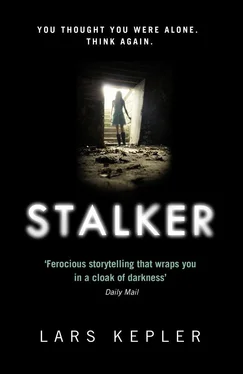

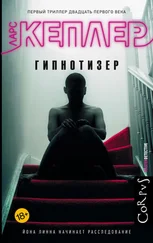
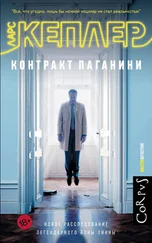
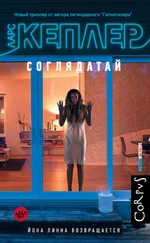
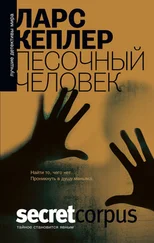
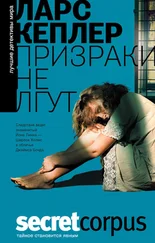


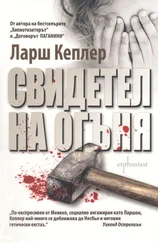

![Ларс Кеплер - Гипнотизер [litres]](/books/402890/lars-kepler-gipnotizer-litres-thumb.webp)
